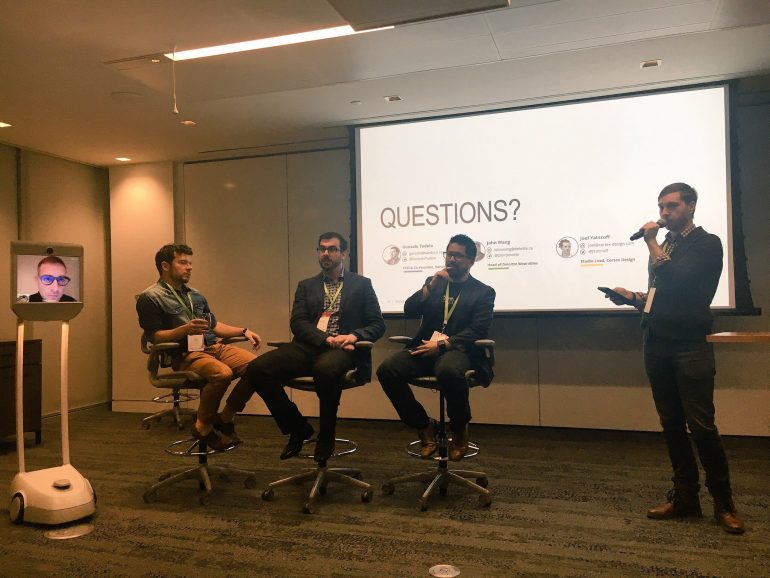As we mourn the death of Canadian-born Pebble, We Are Wearables Toronto ended off the year with a special edition with Deloitte exploring wearables’ impact on enterprise — and implied that this is the industry where wearable companies could have the most impact.
At Deloitte Canada’s office in downtown Toronto, speakers from Deloitte touched on the enterprise perspective of adopting innovation, while panelists on the startup side spoke to some of the challenges of breaking into this market.
“Risk aversion is a big one — when enterprise starts to see some quantifiable numbers on what the impacts can be to the bottom line, I think we’ll see a big uptick in adoption,” said Joel Yatscoff, Studio Lead at Cortex Design.
Live demo of a smart helmet for miners @JYatscoff #WWTO #WearablesWork @D_Wearables pic.twitter.com/lbcGZhOGEC
— We Are Wearables (@WeAreWearables) December 9, 2016
Like the consumer market, wearables struggle to maintain their user base. “We have a lot of people who are interested in wearables, but no longer own it. The reality is that a lot of people have dropped off. When [it comes to] enterprise adoption, we need to make sure we’re getting through this,” said Gonzalo Tudela, CEO and founder and Vandrico. “What we’re seeing on the front lines is there’s a bit of a break. What we’re starting to see — what we haven’t seen before — is the enterprise propensity to innovate and enterprise propensity to try things.”
Implementing wearables in an enterprise context will require tackling two problems: figuring out the most effective way to scale hardware, and data silos. “Something that is the underlying tone here is that in order for a wearable to be valuable and to be relevant in an enterprise context, we need to solve the data silo problem in an enterprise scalable way,” said Tudela. “You have to have the interface for the user to work with, and given some enterprise environments, interaction is integral.”
John Wang, partner at Deloitte, agreed that having wearables interact is essential to encouraging enterprise wearable adoption.
His dream has come true. @tomemrich is a robot! #tombot #WWTO pic.twitter.com/R9Y7aOdodH
— Paula Kwan (@PaulaKwan) December 8, 2016
“The industry is maturing — the consumer wearables space is slowing down a bit. There’s a lack of standards across all wearables devices, and if we could get these wearables devices to communicate better together, that does fundamentally improve adoption but it doesn’t change the fact that we need to solve a real business problem and that’s what it will take.”
At the same time, it’s difficult to see the value of wearables in an enterprise context because there isn’t enough storytelling around the space. Tom Emrich, founder of We Are Wearables and partner at Super Ventures, said that this is due to the nature of contracts.
“Especially with pilots… even though there’s companies doing amazing things with enterprise, they can’t even speak about them because they’re locked by an NDA,” said Emrich. “I think, come 2017, now that a lot of these pilots are moving to full implementations, we’re definitely gonna see much more media attention and storytelling.”


